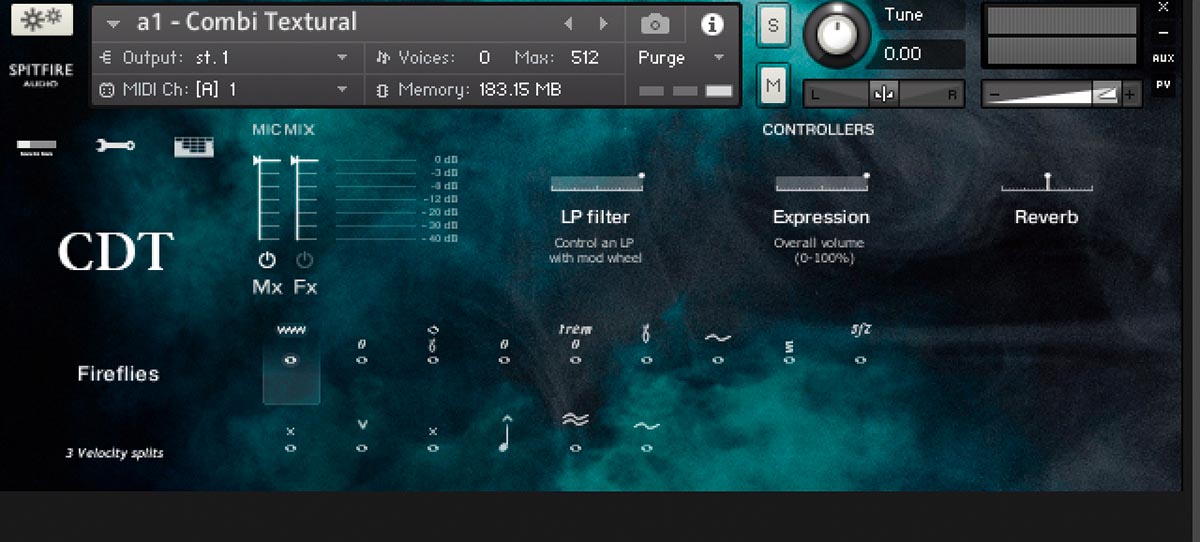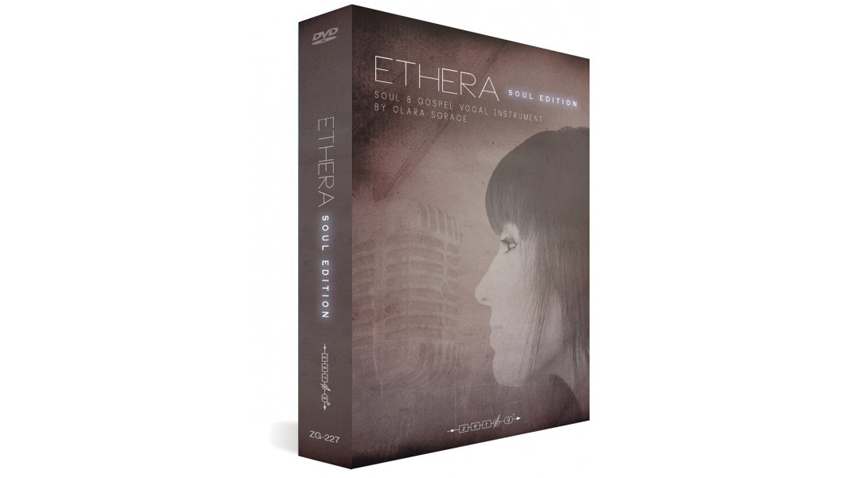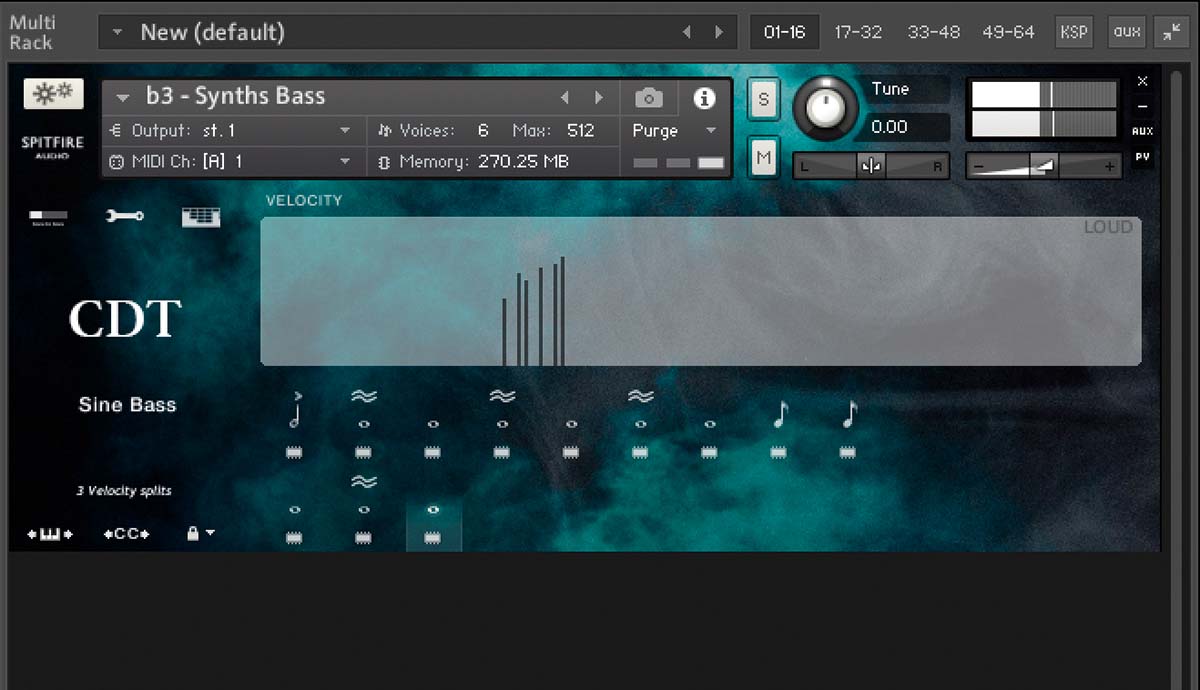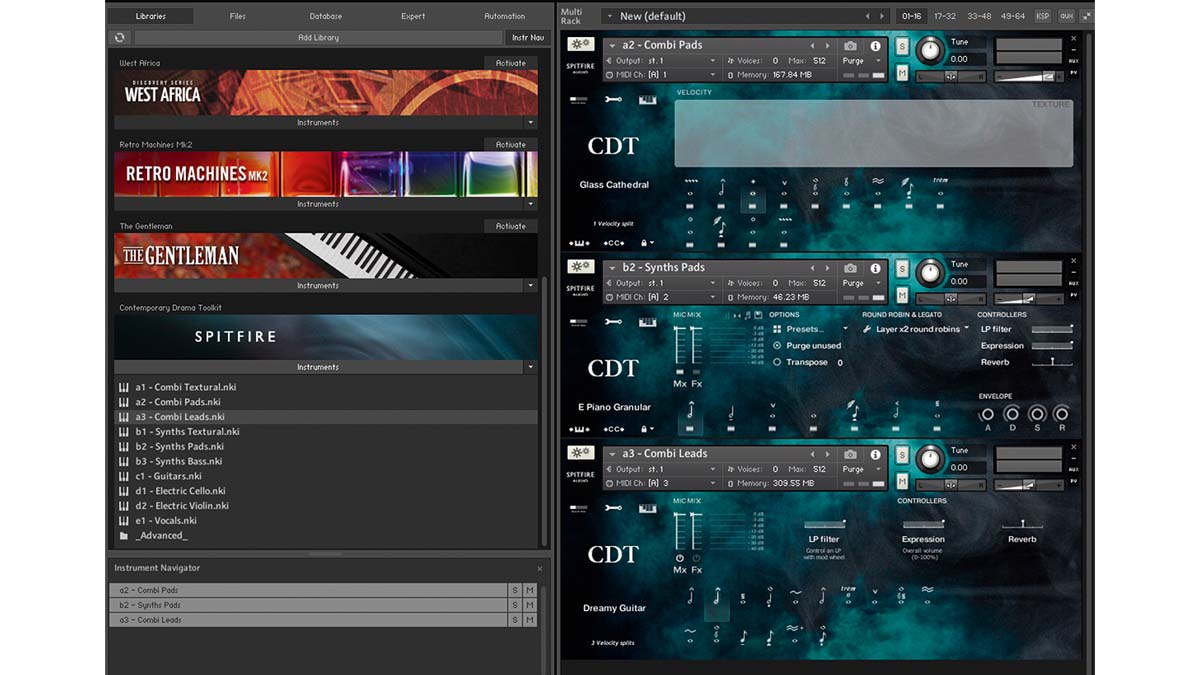MusicRadar Verdict
CDT’s captivating sound palettes will easily underscore the drama in any scene, encouraging composers to musically express their reactions to picture.
Pros
- +
Novel, speedy approach to scoring.
- +
Incredible-sounding evolving textures.
- +
Simple GUI.
Cons
- -
Occasional lag when loading larger patches.
- -
Pros may consider it a cheat.
MusicRadar's got your back
What is it?
With the majority of modern television, cinema and trailer scores, epic bombast and size have been supplanted by subtler arrangements. These more delicate undercurrents weave throughout the drama, enhancing tension, underscoring emotional upheaval and keeping our focus squarely on the screen. This amorphous sound that organically shifts in tandem with the visual action is increasingly in vogue.
Spitfire Audio has had its fingers on the pulse of the ebb and flow of the scoring world for 14 years, with founders Christian Henson and Paul Thomson both reeling in awards for their respective compositions. The company’s releases have provided deep access to the sonic universes of Hans Zimmer, Eric Whitacre, Ólafur Arnalds and a variety of other figureheads.
With 2018’s British Drama Toolkit, however, Spitfire chose to provide a route that forewent the recommended grounding in musical theory and built a pack that shifted focus on the velocity at which you played, triggering the performances of ensemble players, that had been crafted into pre-determined textures.
While an excellently effective, and refreshingly simple toolkit, BDT was merely the first of these forays, and Spitfire has refined the series further with Contemporary Drama Toolkit, again in collaboration with respected composer Samuel Sim. In lieu of the former’s leaning toward traditional instrumentation, CDT melds synths, vocal sounds and heavily processed electric instruments and conjures something quite uncommon.

Meeting of minds
In making Contemporary Drama Toolkit, Samuel Sim and the team at Spitfire have carefully harnessed some astoundingly rich textures from a range of instruments. Sim’s range of award-winning scores has included the recent Netflix fantasy epic The Dark Crystal: Age of Resistance and BBC One’s The Victim.
He has long been aware of the deadline pressures that this is aimed to alleviate. Working at Tileyard Studios in North London, Sim would regularly discuss the state of the industry with the neighbouring Thomson and Henson, and the three ultimately decided to collaborate. Their first project, the delightful, harp-bending Chrysalis, was released in 2016.
The team’s next foray introduced velocity-triggering. British Drama Toolkit was unveiled in 2018, and its success led the team to spend the next three years expanding on that approach with CDT. Allowing for these articulations’ curated layers to be armed and ready to go with a simple key press really does change the previously time-demanding game for modern composers, and it’s likely that Spitfire will continue this novel direction in the coming years.
Want all the hottest music and gear news, reviews, deals, features and more, direct to your inbox? Sign up here.
Performance and verdict
The interface is comfortingly simple to grasp, comprising of three, switchable, screens – the General Overview, Expert View and Velocity Layer Display View, while to the left of the interface, we can choose between ten instruments.
Opening any of these umbrella patches reveals a selection of curated articulations in the main panel, clickable by selecting any of the Semibreves that appear lined up beneath whichever of the three views you have currently open. Though you can open up the individual articulations by clicking on the Advanced folder, it’s the specially-assembled magic of the combinations that we’re most keen to wallow in.
Cycling through these, we’re granted immediate musical colour with the intensity of our performance revealing or obscuring elements of the mixed articulation. It results in us approaching the keyboard as quite a different tool to what we’re used to, as we’re not ‘composing’ in the traditional sense here.

• Zero G Ethera Soundscapes
All you need to build evocative textures for soundtracking – a bit more like work though
• Spitfire British Drama Toolkit
The same theory-free principle – with luscious sounds fashioned by a small chamber ensemble
Often, we’re triggering atonal, fluttering textures that flit around the soundstage. In the General Overview panel we’re also presented with a low-pass filter, an Expression controller and a Reverb controller. These can be able assistants for merging articulations (which is possible via the Expert view).
There’s a spectrum of sounds on offer, each yielding new sonic fruit depending on how we play them. Combi Textural and Combi Pads are a safe port of call, and the package’s pro-sounding chops are ably demonstrated across some scintillating articulations, labelled suggestively with such monickers as ‘Haywire’ ‘Fireflies’ and ‘Frozen Textures’.
Switching through some of the Guitar, Electric Cello and Violin patches result in some reverb-saturated, spine-tingling tones. In isolation, any one of these is enough to heighten the emotions of a scene, so when stacked up with the other articulations, or sprinkled through a mix, the options become pretty immense.
Elsewhere we have some tension-heightening vocal samples, that range between the haunting and the breathy to the angelic high-end. Many of the rippling synth textures that resonate throughout the Combi patches can be individually explored, too. These sound really tremendous, which is to be expected, wrought as they are from the legendary Juno 6 and MS-20, and processed via Eurorack modules and analogue effects.

Make some space
Though Spitfire’s aim here is squarely on providing the user with instant access to some of the typical textures of modern scoring via velocity, there are still some deeper options that can help to wrench it into something a little more unique. The Microphone Mixer grants greater control over the microphone positions and allows you to load and unload different microphones.
Making adjustments here can have some major effects on how the triggered patches move around the virtual space. Also within this section are settings for adjusting Velocity Response (which you can fine-tune to suit your controller), a Pan Mic Collapser, which enables width sculpting, and Mic Mix to Articulation Linker which affixes any adjustments to the currently selected articulation. Envelope adjustment can also affect decay and attack times, too.
Instant drama
Though certain seasoned pros may scoff at the hassle-free simplicity of the library’s instinct-based approach to scoring to picture, CDT undoubtedly opens up many time-restrictive doors for those finding their feet in this world, as well as enabling a swift workflow for those under deadline pressure or prepping a pitch. And, if you’re interested in peppering your mixes with some lush, evolving colours, pre-layered, then this will hastily plug those gaps.
Contemporary Drama Toolkit provides an immediate route into this nuanced style of soundtracking. It would have been nice to have a few more individual samples considering the price point of the title, though what the pack amounts to sounds sublime and pushes us to re-think what we know about modern soundtracking. Instant drama!
MusicRadar verdict: CDT’s captivating sound palettes will easily underscore the drama in any scene, encouraging composers to musically express their reactions to picture.
The web says
"I immediately found pads and textures I liked a lot: the warm, blissful wash of ‘Lush Pad’ is a killer and the high‑pitched starbursts of ‘Piano Black Hole’ are inspirational, while the amazingly lush, gently evolving ‘Frozen Textures’ and delicate ‘Guitar Shimmers’ swathe clean guitar plucks in halos of heavenly reverb."
Sound On Sound
"Consider British Drama Toolkit as a happy bedfellow to other libraries that might offer melodic-based or legato instrumentation, or also as a standalone for creating stunning backdrops. It’s perfect for British Dramatic scoring, which might be its restriction, but it is also the library’s key strength."
MusicTech
Hands-on demos
Spitfire Audio
Specifications
- TYPE: VST sample library
- KEY FEATURES: Designed with composer Samuel Sim, ~7196 S samples, size: 9.8GB uncompressed .WAV
- SYSTEM REQUIREMENTS: 28GB disk space, Mac OS X 10.10 or later, Intel i5, Windows 7, Windows 8, or Windows 10 (latest Service Pack, 32/64-bit) Intel i5 or AMD Ryzen 3, Kontakt or Kontakt Player 5.6.8 or higher
- CONTACT: Spitfire Audio
Computer Music magazine is the world’s best selling publication dedicated solely to making great music with your Mac or PC computer. Each issue it brings its lucky readers the best in cutting-edge tutorials, need-to-know, expert software reviews and even all the tools you actually need to make great music today, courtesy of our legendary CM Plugin Suite.

